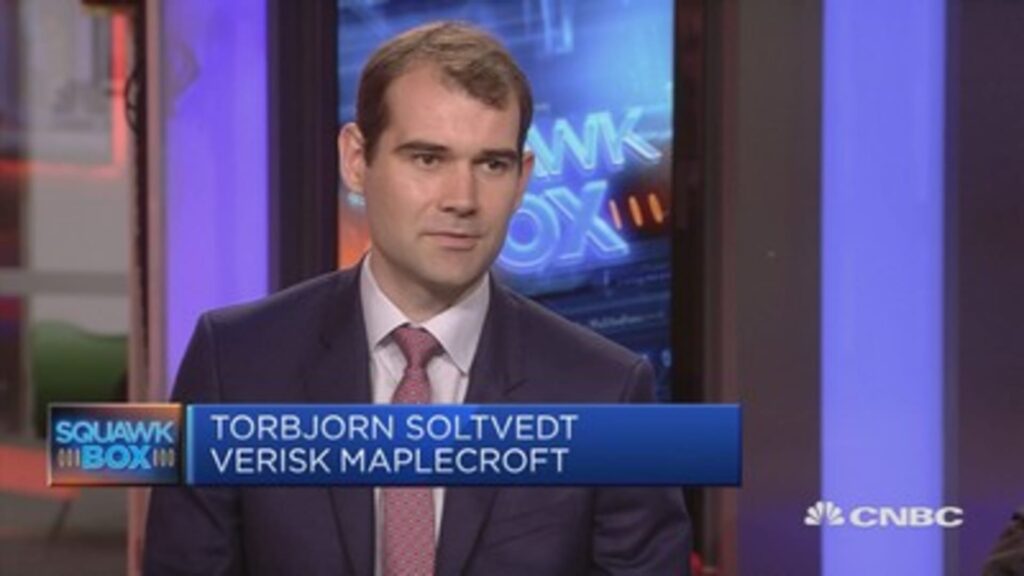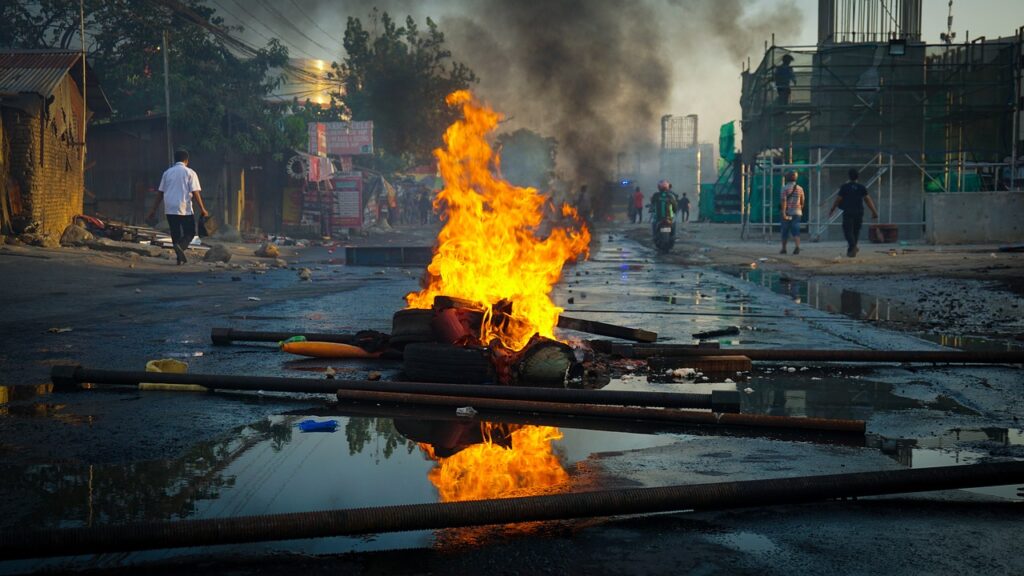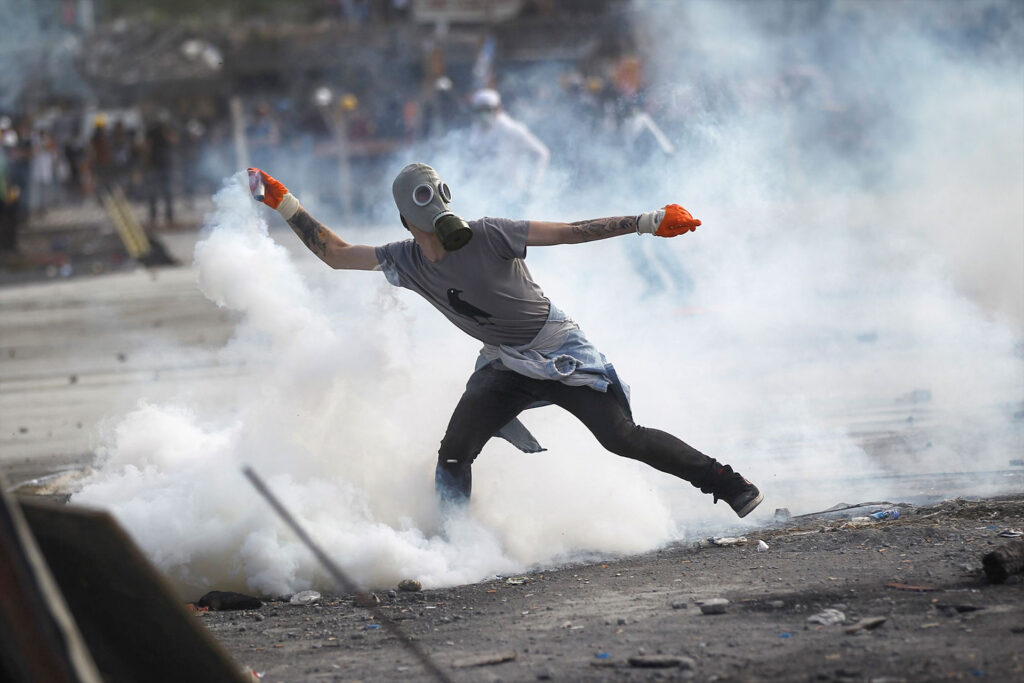What’s becoming evident is that these highly damaging unrest events are occurring more frequently. They are causing significant insured losses, and claims resulting from SRCC in various parts of the world are beginning to rival those stemming from natural catastrophes.
Torbjorn Soltvedt, Principal Analyst in the Risk Insight Team at Maplecroft
Political and civil unrest, pandemics, warfare and climatic disasters are all elements that elevate business risks and damage economies. Insuring dangerous global hotspots has become an expensive problem, made even more challenging when big industry players withdraw their services to prevent their own losses.
But technology has evolved in recent years, and assessing such risks on a global scale, and therefore shaping better business practices, is now possible. Earlier this month, Verisk Maplecroft launched its new SRCC (Strikes, Riots, and Civil Commotion) Predictive Model – a cutting-edge solution that predicts major bouts of unrest.
Verisk Maplecroft was formed for this precise purpose. Verisk acquired Maplecroft, a risk intelligence company specialising in the geospatial modelling and benchmarking of country and political risk, in 2014.
The new platform can provide SRCC risk scores for thousands of global locations, before problems escalate, offering 12-month forecasts for 50,000 counties and districts globally on the risk of severe protests occurring that could result in insured losses. The machine learning model also validates its predictions against actual insured losses and draws on geospatial data covering the size of recent protests, concentrations of economic value, demographics, and a range of political risk, climate, and socio-economic indicators.
During the launch, Verisk Maplecroft’s Head of Risk Analytics, Sam Haynes, described the challenges facing the industry, saying: “Insured losses linked to major bouts of unrest have reached new highs in recent years, while our data tells us that in the last 12 months, SRCC risks have risen in over 50% of countries. As these risks expand, so too does the need for granular, forward-looking data that provides valuable insight into exposures.”
Torbjorn Soltvedt’s role as Principal Analyst in the Risk Insight Team at Maplecroft – the division that analyses geopolitics and political instability – places him at the forefront of the project. We caught up with him to find out more.
Tell us about your role and what it entails.
I work as a principal analyst in our risk insight team covering global SRCC trends developments. It’s essentially about diving into the data and collaborating with various teams within the organisation to understand what is driving SRCC risks. These teams consist of experts specialising in different regions and countries, as well as subject matter experts who handle topics such as social and environmental risks. Coordinating efforts across these teams is crucial because, in most cases, political, economic, social, and environmental risks are deeply intertwined. This collaborative approach and the comprehensive 360 degree understanding of political risk are fundamental to Verisk Maplecroft.
Can you also give us an overview of what Verisk Maplecroft’s main purpose is?
Sure. Our primary role involves providing data, research, and analysis on global political risk, sustainability, and resilience issues that encompass the broader ESG (Environmental, Social, and Governance) landscape. The core of our work revolves around integrating these elements in an interconnected manner, providing our clients with a comprehensive data-driven, global perspective on risk.
Our research and analysis are built upon a solid foundation of data, including a diverse set of risk indices and datasets that span 170 issues and 198 countries. These data resources encompass a wide spectrum of topics, ranging from political violence and human rights to climate change and environmental concerns.
We complement this data-driven approach with multidisciplinary teams comprising country risk analysts, country experts, data analysts, and consultants. It is this combination of quantitative and qualitative expertise that delivers valuable insights to our clients.

In layman’s terms, what is the SRCC data model? What is it doing with the information it gathers – and who will be using it?
In essence, it’s the world’s first predictive SRCC (strikes, riots, and civil commotion) data solution that combines global coverage with intricate local detail. This predictive model serves as a tool for the insurance industry to anticipate the occurrence and potential severity of large-scale and damaging SRCC events.
A bit of background on the SRCC model: it was developed as part of the Lloyd’s Lab Accelerator Programme. Our aim was to create a model that enables political violence underwriters, exposure analysts, modellers, and specialty reinsurance experts to forecast and monitor SRCC risks in over 50,000 locations worldwide. Essentially, the model provides a rolling 12-month outlook on SRCC risk across the entire world.
What technologies are driving it and how does it gather all this data?
Crucially, the model validates its predictions for SRCC (strikes, riots, and civil commotion) risk against actual insured losses. In addition to this, the model leverages geospatial data covering the size of recent protests, concentrations of economic value, demographics, as well as a number of political risk, climate, and socio-economic indicators that impact SRCC worldwide.
It also incorporates geospatial data on factors like the concentration of economic activity in specific areas and demographic information. Furthermore, it encompasses a wide array of risk drivers, including various political, climate, and socioeconomic indicators that impact SRCC risk worldwide. These indicators encompass factors like inflation, unemployment rates, and income inequality within a particular country.
All of these elements work in concert to generate a highly localised SRCC score for the upcoming 12 months. This score enables insurers to gain a deeper understanding of the likelihood of encountering damaging protests or other SRCC events in those specific locations during the specified timeframe.

Why now? Are we facing a period of time where SRCC technology will see an increase in demand? And if so, what are the factors driving that?
Certainly, this initiative has been long overdue, with the need for such a model apparent for at least the past five to ten years. The wake-up call, in particular, came with the protests and riots in Chile in 2019, which began in Santiago and spread throughout the country. This was a significant event for the insurance industry, resulting in approximately US$3 billion dollars in insured losses.
Since then, we’ve witnessed several events of a similar magnitude. The events in the United States in 2020, for instance, led to insured losses in the vicinity of between $2.5 billion and $3 billion dollars. In 2021, the Zuma riots in South Africa incurred insured losses of around $3 billion dollars. This summer, we were reminded again of the impact of such events with the protests and riots in France.
What’s becoming evident is that these highly damaging unrest events are occurring more frequently. They are causing significant insured losses, and claims resulting from SRCC in various parts of the world are beginning to rival those stemming from natural catastrophes. While major natural catastrophes remain on a different scale and can lead to losses in the tens of billions of dollars, the concerning trend in SRCC over the past years demands more sophisticated tools for understanding and pricing these risks correctly.
The insurance industry has a robust understanding of natural catastrophes, but when it comes to SRCC, there has been a lack of solutions and granular forward-looking data that considers all the critical risk drivers. This is precisely why we are introducing this model to the market now—to provide the insurance industry with a more comprehensive and forward-looking understanding of SRCC risk.
Which global areas at the moment are currently areas of concern? Are there any particular regions that are predicted hotspots?
A useful way to understand the current situation is by comparing our latest 12-month SRCC forecast, with the conditions two years ago. What we’re observing is that global risks have significantly increased, and they were already at a high baseline due to events like the COVID-19 pandemic and the conflict in Ukraine. Over the past few years, we’ve witnessed a continuous rise in risks, affecting every region of the world, with the exception of the Middle East and North Africa, where higher oil and gas prices have allowed net energy exporters to use subsidies and price caps to shield consumers from rising global commodity prices.
To put it in perspective, South America currently exhibits the highest overall SRCC risk globally. However, if we examine a region like Europe, the aggregate risk level is lower, but Europe has experienced the most pronounced increase in risk over the past two years.
This escalation of SRCC risk is a global phenomenon, making it increasingly challenging to predict when and where high-impact events are likely to occur. When we consider the global macroeconomic landscape, it remains challenging.
The World Bank recently described the global economic outlook as difficult, and until that changes, it’s unlikely we’ll see a reversal of the negative trend that has persisted for several years.
Essentially, the cumulative effect of rising commodity prices in recent years has intensified socioeconomic pressures worldwide, which contributes to the ongoing rise in SRCC risks that we are observing.
How will this technology benefit businesses globally from an insurance perspective?
There has been a substantial surge in demand for political violence insurance coverage. Currently, there’s a shortage of adequate solutions to satisfy this demand. That’s precisely where our model steps in — it aims to address this challenge and ensure that the increasing demand for political violence insurance can be effectively met.
The sustained increase in SRCC risk over the past few years carries potential dangers too. If these risks continue to escalate in the coming years, there may be a temptation for many insurance providers to withdraw from regions or country classifications deemed to have higher risk profiles. Some might even consider exiting specialised political violence insurance altogether.
What our model offers is a valuable tool for the insurance industry to effectively manage their portfolios. It enables them to pinpoint risks and opportunities with greater precision by helping them anticipate where large-scale damaging events are likely to occur and the extent of potential damage. In essence, it aids in understanding the unique dynamics within each country and even at the local level. This understanding, in turn, positions the insurance industry to capitalise on the growing demand for political violence insurance coverage worldwide.
In summary, the main benefit of our model lies in empowering the insurance industry to make more informed decisions and navigate the evolving landscape of SRCC risks more effectively.

How will the project unfold and be implemented over the next 12 to 18 months?
We officially launched the model earlier this month at the Verisk insurance conference in London, and it’s exciting to note that it’s already being integrated into a range of insurance exposure management tools. We’re actively collaborating with the insurance industry, and this partnership will be crucial as we continue to advance the model.
Are there any new technologies to roll out?
Our ongoing efforts include further enhancements, such as refining and downscaling the model to a finer granularity. This means going down to the street level to factor in details like the types of buildings most likely to be targeted during SRCC events.
There are multiple workstreams in progress, all aimed at enhancing accuracy and granularity. While we already have a number of clients using the model, we believe there’s still significant potential for further development and sophistication.
Interview by Joanna England

Joanna England is an award-winning journalist and the Editor-in-Chief for Insurtech Insights. She has worked for 25 years in both the consumer and business space, and also spent 15 years in the Middle East, on national newspapers as well as leading events and lifestyle publications. Prior to Insurtech Insights, Joanna was the Editor-in-Chief for Fintech Magazine and Insurtech Digital. She was also listed by MPVR as one of the Top 30 journalist in Fintech and Insurtech in 2023.








